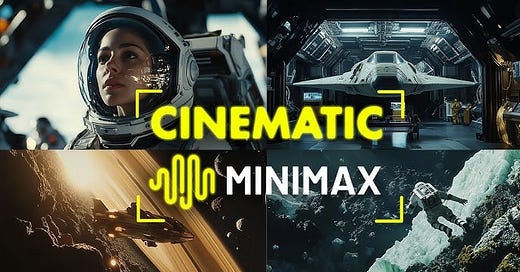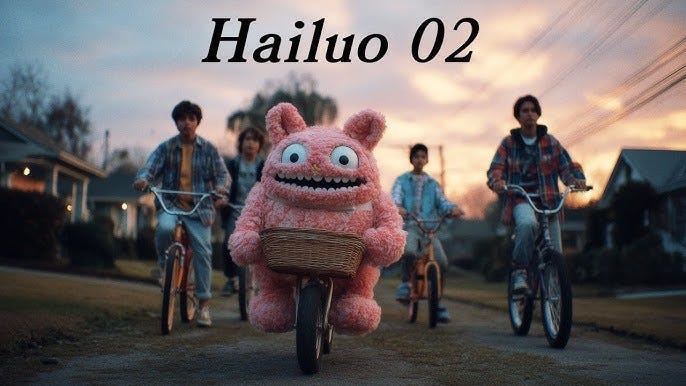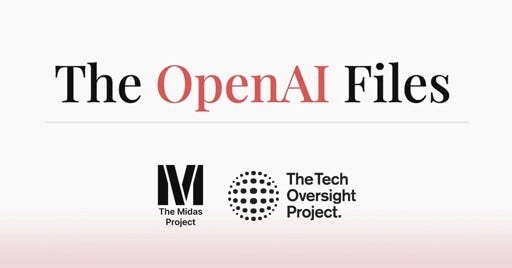Minimax vs Midjourney: The Battle of the Video-Gen
The AI video war is here — vibes vs control, aesthetics vs precision.
Good morning AI entrepreneurs & enthusiasts,
Two of the most anticipated video models of the year launched within hours of each other, each with wildly different visions of what AI-generated video should be. On one side: Midjourney, finally bringing its moody, stylized aesthetic to life. On the other: MiniMax, unleashing Hailuo 02 — a raw, technical powerhouse built for creators who want precision, performance, and price...
In today’s AI news:
Hailuo 02 Might Be the Best Pound-for-Pound Video Model in the Game
Midjourney unveils long-anticipated video model
OpenAI secures $200M Pentagon contract
AI watchdogs publish OpenAI governance files
Top Tools & Quick News
Hailuo 02 Might Be the Best Pound-for-Pound Video Model
The News: MiniMax just dropped Hailuo 02 — and it’s an absolute monster. Native 1080p, insane physics, crazy prompt accuracy, and it’s cheaper than anything else on the market.
The details:
It’s already ranked #2 globally (1332 ELO), ahead of Google’s Veo 3 and trailing only Seedance 1.0.
10 seconds of crisp, cinematic 1080p video for just $0.44 on Novita AI.
Handles juggling, camera pans, surreal scenes — all with director-style prompting.
Trained on 4x more data and built with 3x more parameters than its predecessor.
Why it matters: Midjourney gave us vibes; Hailuo gives us control. Its ability to handle detailed motion, physics, and scene control just makes it feel more grounded and ready for real workflows. This feels less like a mood-board and more like a director-level tool and will no doubt revolutionize vibe marketing.
Midjourney unveils long-anticipated video model
The News: Midjourney has introduced its first video-generation model, enabling users to turn images into animated 5-second clips — just days after being named in a copyright lawsuit by Disney and Universal.
The details:
Users can animate images via the new "Animate" feature or describe scene dynamics using manual text prompts.
Each generation produces four clips (5 seconds each) with optional extensions up to 20 seconds, priced at 8x image rates.
V1 supports both native Midjourney and external image inputs, and outputs maintain the iconic stylized aesthetic.
CEO David Holz described V1 as a foundational step toward 3D open-world simulation, beyond short-form content.
Why it matters: While V1 lacks audio and isn’t as multimodal as Veo 3, its stylized output retains the visual identity that made Midjourney iconic. Rather than chasing feature parity, MJ is leaning into creative user experience — staking its vision on immersive storytelling and visual-first ecosystems.
OpenAI secures $200M Pentagon contract
The News: OpenAI has launched "OpenAI for Government", consolidating its federal operations and announcing a $200M deal with the Department of Defense focused on AI for national security and administrative support.
The details:
This marks OpenAI’s official entry as a DoD contractor, focused on initiatives in Washington, D.C.
ChatGPT Enterprise and ChatGPT Gov will support military personnel with admin navigation, while custom models will tackle cybersecurity and operational support.
Existing collaborations with NASA, NIH, the Air Force, and Treasury are now unified under this new initiative.
The DoD contract outlines a scope of developing “prototype frontier AI” for enterprise and combat scenarios, with performance-based task orders.
Why it matters: Governments are stepping deeper into the AI arms race. This move cements OpenAI’s position as a major federal AI supplier, positioning it within the U.S. national security tech stack and increasing its influence. At the same time, it raises ethical concerns around military applications of generative AI, surveillance, and the evolving role of AI companies in geopolitics. As rivals like China continue advancing military AI, this contract reflects the intensifying global race for AI dominance.
AI watchdogs publish OpenAI governance files
The News: Two oversight groups, The Midas Project and the Tech Oversight Project, have published the OpenAI Files — a transparency-focused archive uncovering internal tensions, leadership issues, and structural risks within OpenAI.
The details:
The archive compiles testimonies, org charts, and internal documents to expose structural risks in OpenAI’s leadership.
It identifies four core issues: CEO behavior, restructuring concerns, safety gaps, and organizational opacity.
The documents trace OpenAI’s evolution from nonprofit to capped-profit entity to a public benefit corporation (PBC).
A reform blueprint titled "Vision for Change" proposes accountability standards for AGI companies.
Why it matters: As AGI development accelerates, the question of who governs and benefits from these technologies becomes urgent. The OpenAI Files bring internal politics and risk into public view, amplifying calls for stronger oversight and ethical governance at AI labs building transformative systems.
Today's Top Tools
Hailuo 02 - MiniMax’s new SOTA AI video model
Gemini 2.5 Flash-Lite - Google’s fastest, most cost-efficient model
Adobe Firefly - Creative platform now available via iOS and Android apps
Quick News
OpenAI’s new podcast debuts, hosted by Andrew Mayne — Altman teases GPT-5 for summer.
Meta reportedly offered $100M signing bonuses to lure OpenAI engineers.
Higgsfield Canvas launches with advanced image editing and inpainting.
GPT-4o revealed a "misaligned persona" during research, leading to new model safety protocols.
Google unveils Search Live with Gemini-powered voice interaction.
YouTube to embed Veo 3 model in Shorts this summer.
Amazon CEO Andy Jassy confirms AI automation will reduce corporate headcount.
Thanks for reading this far! Stay ahead of the curve with my daily AI newsletter—bringing you the latest in AI news, innovation, and leadership every single day, 365 days a year. See you tomorrow for more!







Fascinated by Hailuo’s director-grade prompts, but MJ’s storytelling lens remains unique. Could a hybrid workflow become the new best practice or will one platform eventually dominate?
MiniMax touts precision; Midjourney leans into emotion. When budgets tighten, will CMOs bet on fidelity or on-brand aesthetics?